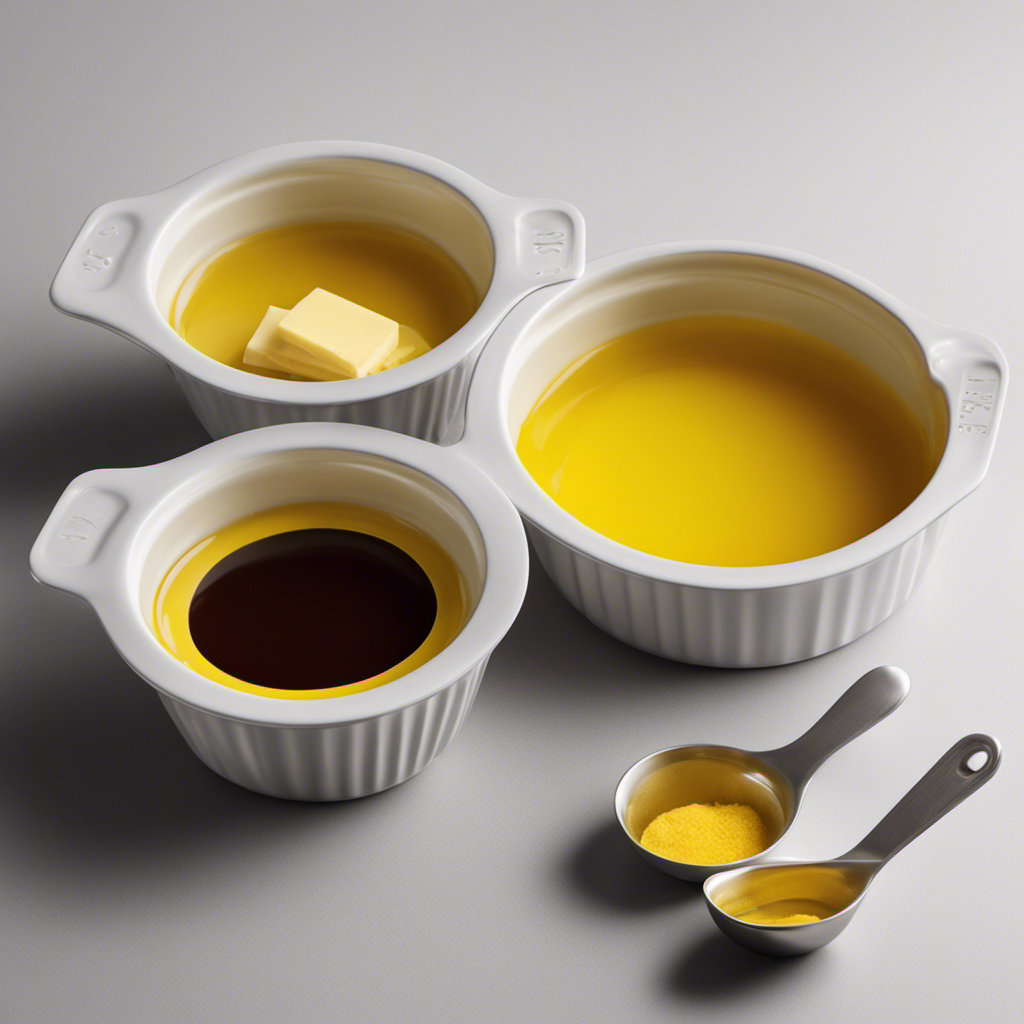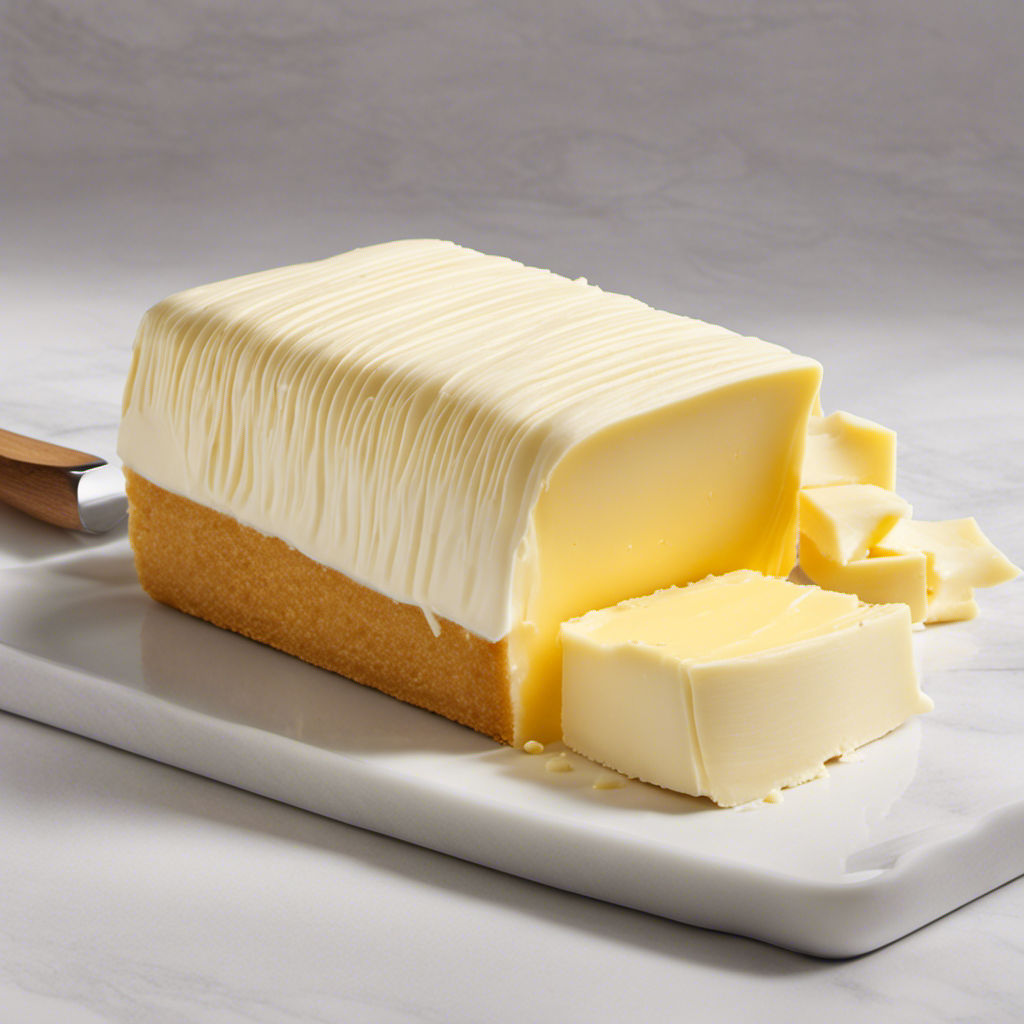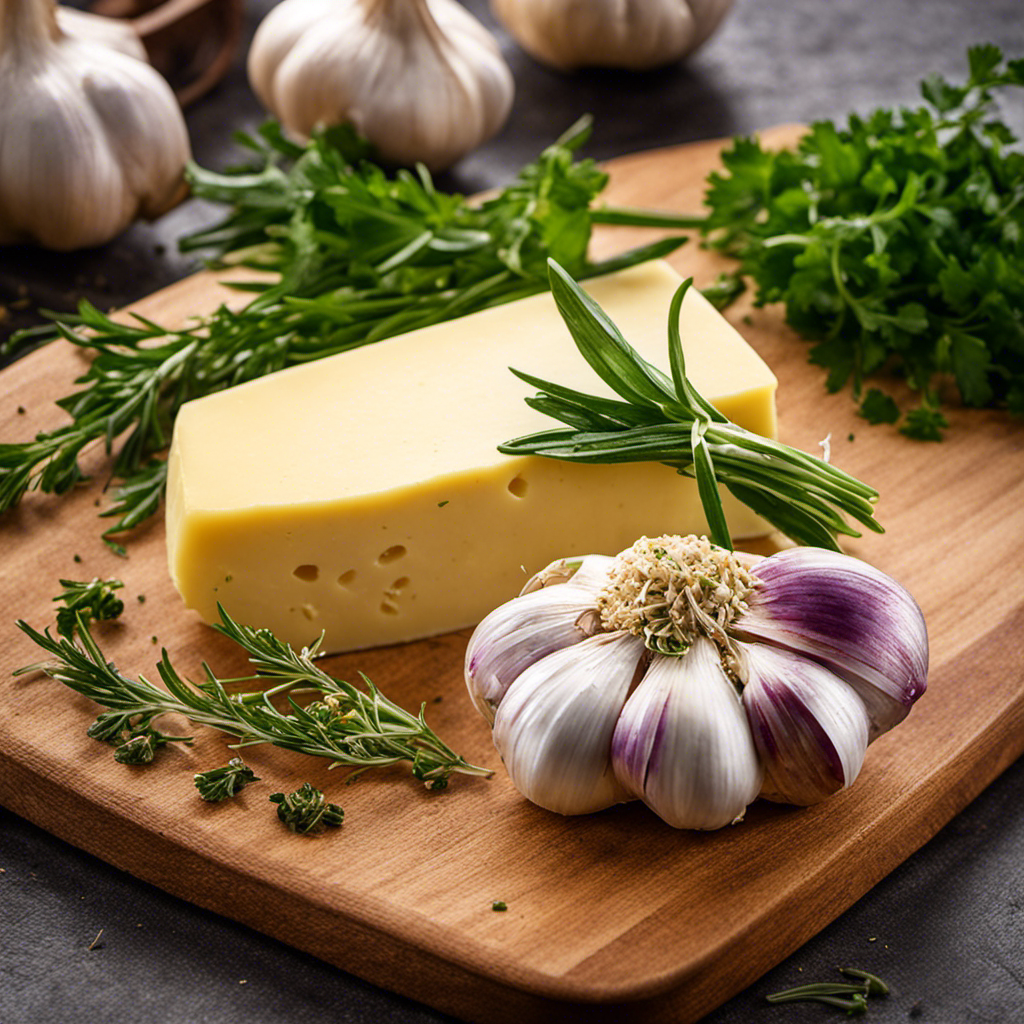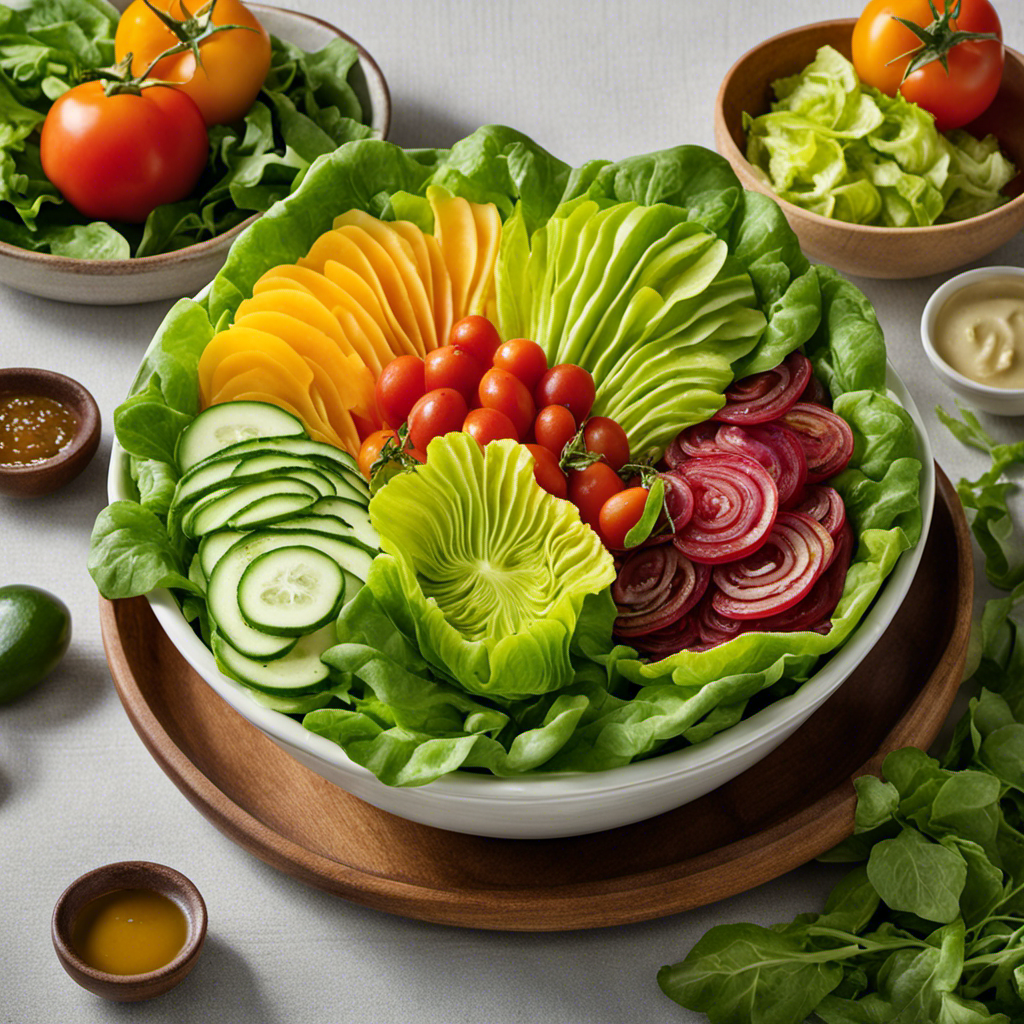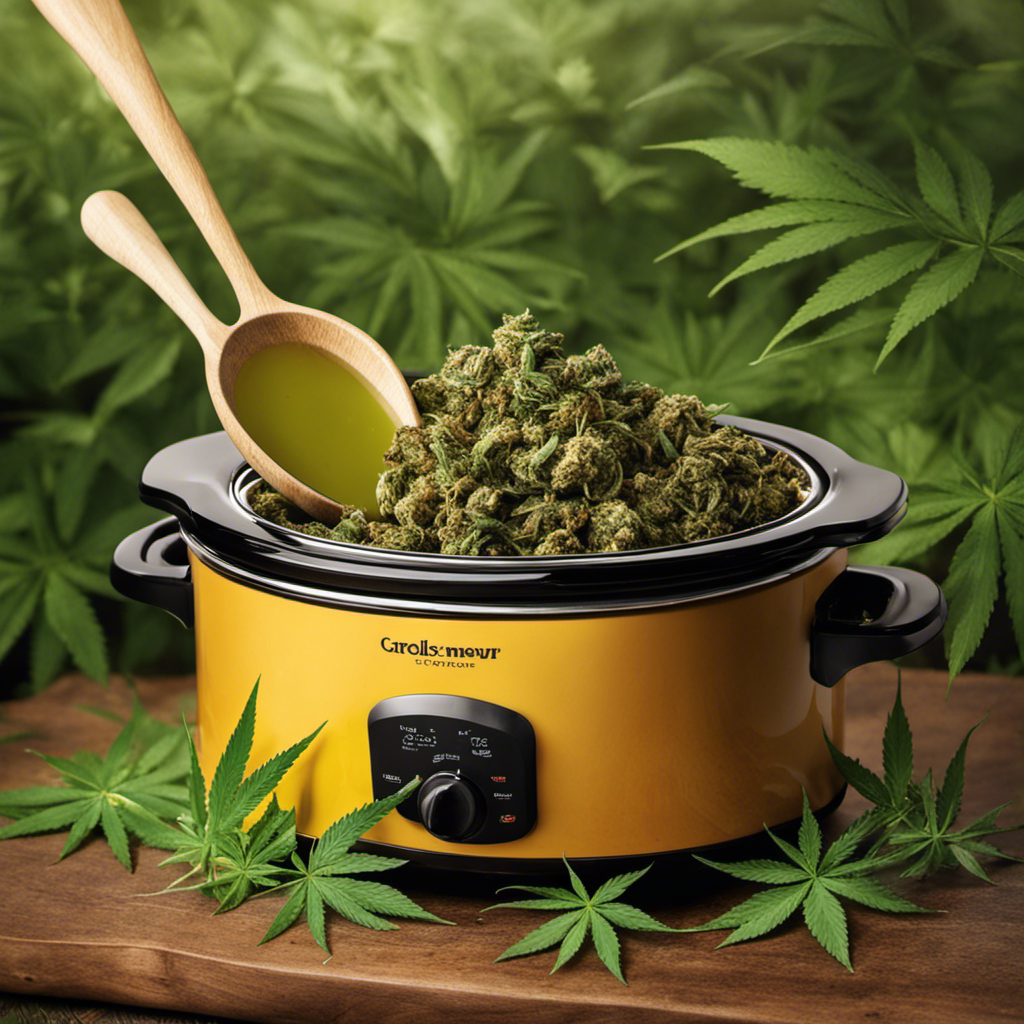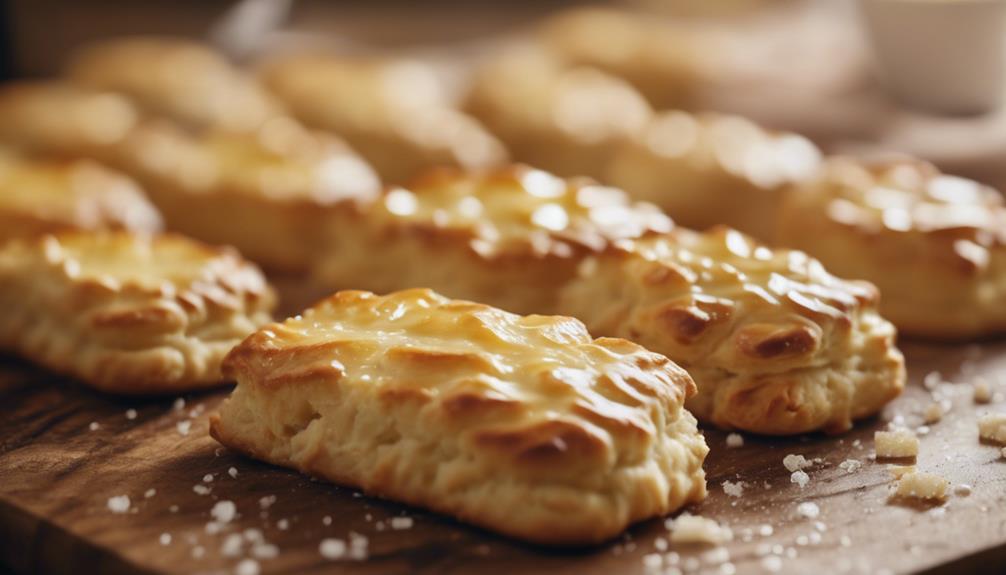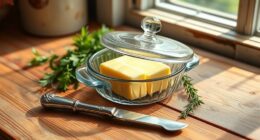I’ve always been curious about using butter instead of vegetable oil in my recipes. Thankfully, I have finally found the answer!
In this article, I’ll share the precise ratio for replacing 1/2 cup of vegetable oil with butter.
We’ll also explore the important factors to consider and some helpful tips for successfully making the switch.
Get ready to discover delicious recipes that use butter instead of vegetable oil.
Let’s dive in!
Key Takeaways
- Use a specific ratio of butter to achieve desired outcome
- Adjust cooking times and temperatures due to lower smoke point of butter
- Butter can provide added flavor, texture, and potential health benefits
- Butter enhances the quality of the final product
Butter as a Substitute for Vegetable Oil
I’ll use butter as a substitute for vegetable oil.
When it comes to baking, butter offers several benefits. First, it adds a rich flavor that can enhance the taste of baked goods. Second, butter has a lower water content compared to vegetable oil, which can result in a more tender and moist texture. Additionally, butter helps create a flakier crust in pastries and cookies.
However, there are some health considerations to keep in mind when using butter instead of vegetable oil. Butter is high in saturated fat, which can raise cholesterol levels and increase the risk of heart disease. It’s important to use butter in moderation and consider other healthier alternatives, such as olive oil or applesauce, for certain recipes.
The Ratio: How Much Butter to Use in Place of 1/2 Cup Vegetable Oil
To substitute 1/2 cup of vegetable oil, I can use a ratio of butter to achieve the desired outcome.
When considering the benefits of using butter instead of vegetable oil as a substitute, there are a few key advantages to keep in mind. Firstly, butter adds a rich and creamy flavor to baked goods, enhancing their taste. Additionally, butter contains natural fats which can contribute to a tender and moist texture in recipes.
However, there are potential challenges when using butter as a substitute for vegetable oil. Butter has a lower smoke point, meaning it may burn at higher temperatures, so it’s important to adjust cooking times and temperatures accordingly. Furthermore, butter is solid at room temperature, so it may not work as well in recipes that require a liquid fat.
As I delve into factors to consider when replacing vegetable oil with butter, it becomes crucial to understand the role of the other ingredients in the recipe.
Factors to Consider When Replacing Vegetable Oil With Butter
When considering a substitution for vegetable oil, it’s important to take into account the specific recipe and its requirements. Here are some factors to consider when deciding between butter and vegetable oil in baking:
-
Flavor: Butter adds a rich and creamy taste to baked goods, while vegetable oil has a more neutral flavor.
-
Texture: Butter can lend a tender and moist texture to baked goods, while vegetable oil tends to create a lighter and fluffier texture.
-
Health benefits: Butter contains essential nutrients like vitamin A and vitamin D, whereas vegetable oil is high in polyunsaturated fats and omega-6 fatty acids.
-
Melting point: Butter has a lower melting point than vegetable oil, which can affect the overall texture of the baked goods.
Considering these factors, using butter in baking can provide added flavor, texture, and potential health benefits.
Now, let’s explore some tips for successfully substituting butter for vegetable oil.
Tips for Successfully Substituting Butter for Vegetable Oil
Using the right ratio is crucial for successfully substituting butter for vegetable oil in baking. When it comes to butter vs. margarine, there are some health benefits to using butter instead of vegetable oil.
Butter is a natural product made from cream, while margarine is a processed spread made from vegetable oils. Butter contains essential nutrients like vitamins A, E, and K, as well as healthy fats like omega-3 fatty acids. These nutrients are important for maintaining overall health and supporting brain function.
Additionally, butter adds a rich and flavorful taste to baked goods, enhancing the overall quality of the final product. However, it’s important to note that butter is higher in saturated fats compared to vegetable oil, so moderation is key.
Delicious Recipes That Use Butter Instead of Vegetable Oil
I love trying out new recipes that call for butter instead of vegetable oil because it adds a rich and flavorful taste to the dishes. When it comes to baking, using butter can have several benefits:
-
Enhanced flavor: Butter has a distinct taste that can elevate the overall flavor profile of baked goods.
-
Improved texture: Butter adds moisture and richness to baked goods, resulting in a tender and moist texture.
-
Better browning: Butter contains milk solids that promote browning, giving baked goods a golden and appetizing appearance.
-
Enhanced aroma: The aroma of butter while baking can be incredibly enticing and contribute to the overall sensory experience.
To properly cream butter for baking recipes, follow these steps:
-
Soften the butter at room temperature until it’s pliable but not melted.
-
Cut the butter into small cubes for easier creaming.
-
Use an electric mixer or stand mixer to beat the softened butter until it becomes light and fluffy.
-
Scrape down the sides of the bowl occasionally to ensure even creaming.
Frequently Asked Questions
Can I Use Margarine Instead of Butter as a Substitute for Vegetable Oil?
Yes, you can use margarine as a substitute for vegetable oil in baking. However, it’s important to note that margarine contains water, so it may affect the texture and moisture of your baked goods compared to using butter or oil.
How Does the Taste of Butter Compared to Vegetable Oil Affect the Final Outcome of Baked Goods?
The taste of butter compared to vegetable oil has a significant impact on the texture of baked goods. Adjusting baking time and temperature is necessary when using butter as a replacement for vegetable oil.
Should I Melt the Butter Before Substituting It for Vegetable Oil?
Should I use unsalted or salted butter as a replacement for vegetable oil? Can I use clarified butter instead? It’s important to consider the recipe’s flavor profile and whether you want a hint of saltiness. Clarified butter can be a suitable substitution as well.
Can I Use Salted Butter as a Replacement for Vegetable Oil?
Using unsalted butter as a substitute for vegetable oil in baking recipes can alter the texture of the final product. Clarified butter can also be used instead of vegetable oil, but it may affect the flavor.
Are There Any Specific Adjustments I Need to Make When Substituting Butter for Vegetable Oil in a Recipe?
When substituting butter for vegetable oil in a recipe, there are specific adjustments needed and recipe modifications to consider. It’s important to understand the differences in texture, moisture content, and melting point.
Conclusion
In conclusion, when replacing 1/2 cup of vegetable oil with butter, it’s important to consider the ratio and factors such as taste and texture. By using a 1:1 ratio, you can successfully substitute butter for vegetable oil in your recipes.
Remember to adjust cooking times and temperatures accordingly. With this substitution, you can create delicious and flavorful dishes that will leave your taste buds dancing with joy.
So go ahead, butter up and savor the delightful results!
